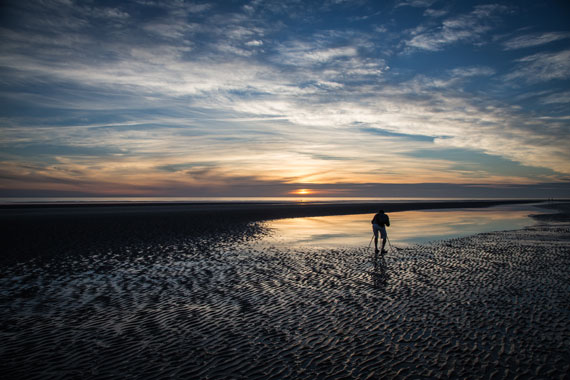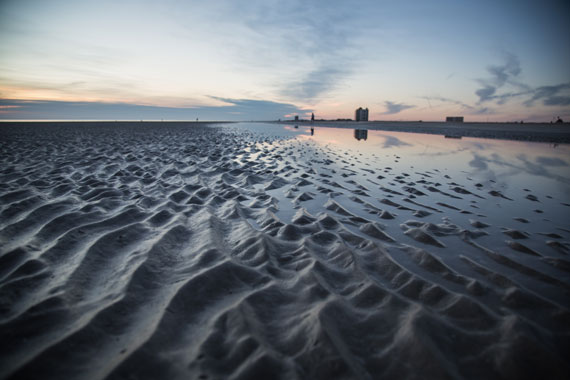As a photographer, one of your most compelling tools is the ability to harness light to reveal the intricate textures within your subjects. Whether you’re capturing the delicate veins of a leaf, the worn grains of a wooden table, or the rugged roughness of a rocky landscape, the right lighting can make these textures pop, adding depth and dimension to your photos.
This blog post will delve into the best times and lighting conditions to accentuate textures in photography.

1. The Golden Hour
The golden hour, known as the first hour after sunrise or the last hour before sunset, is arguably one of the best times to photograph textures. The sun’s angle during this period produces a soft, warm light that glazes the subject, highlighting the textures with a blend of light and shadow. The longer shadows cast during the golden hour can bring out the depth and details of the textures you’re trying to capture.
2. Overcast Days
Although seemingly counterintuitive, overcast and cloudy days can provide excellent lighting conditions for texture photography. The cloud cover acts like a giant softbox, evenly dispersing the light and reducing harsh shadows. This diffused light can bring out subtle textures that might otherwise be lost under the stark contrasts of a bright sun.
3. The Blue Hour
The blue hour, which occurs just before sunrise and just after sunset, offers another window for capturing remarkable textures. During this time, the light is cool and soft, creating a serene atmosphere that can emphasize the textures of your subjects, especially if they have a cold color palette. Although the light during the blue hour can be quite dim, you can use this to your advantage to capture softer, more nuanced textures.

4. Side Lighting
Regardless of the time of day, the direction of your light source plays a crucial role in accentuating textures. Side lighting, in particular, is ideal for texture photography. When light strikes your subject from the side, it creates shadows that define and enhance the texture, making it appear more pronounced. You can create side lighting artificially with a single light source, or naturally with the sun during early morning or late afternoon.
5. Artificial Light
When natural light isn’t an option, artificial light can help to accentuate texture. Directional artificial light, such as that from a flashlight or a single studio light, can be used to create side lighting and shadow effects. Try adjusting the angle and intensity of the light source to see how it affects the appearance of the texture.
6. Utilizing Backlighting
Backlighting involves having the light source behind the subject, which can create a rim of light that outlines the subject and emphasizes texture. This technique works best with translucent or semi-translucent subjects, like leaves or slices of fruit, where the backlight can shine through to reveal intricate internal textures.
The Role of Texture in Photographic Composition
Texture plays a pivotal role in the overall composition of a photograph, and understanding how to incorporate it effectively can take your images to the next level. Just like line, shape, and color, texture is one of the essential elements of composition. It can be used to create contrast, providing a counterpoint to smooth areas within a shot or highlighting the similarities or differences between subjects.
Texture can also be used to guide the viewer’s eye, with coarse textures attracting more attention than smooth ones. In addition, texture can impart a sense of depth, making a two-dimensional image appear three-dimensional. This sense of depth can make your photos more immersive, inviting the viewer to ‘touch’ the surfaces with their eyes. Ultimately, texture adds richness and detail to photographs, creating a tangible quality that engages the viewer on a deeper level.
Remember, photography is a creative pursuit, and these guidelines are not set in stone. Experiment with different lighting conditions, times, and techniques to discover what works best for your unique style and the particular textures you’re capturing.
For Further Training on Composition:
Are you ever tired of your photos looking dull or boring? Our new Composition Cheat Sheets have you covered. With clear, concise information on all the essential elements of composition, you’ll never be unprepared again. They are currently 81% off for the launch sale which ends soon if you want to check them out.
The perfect companion for any photographer. Print one out whenever you need it. These cheat sheets consolidate crucial composition-related information, allowing you to concentrate on what truly matters – composing striking photographs.
Launch sale ending soon: The Composition Cheat Sheets at 81% Off
- - - - - - - - - - - - - - - - - - - - - - - - - - - - - - - - - - - - - - - - - - - - - - - - - - - - - - - - - - - - - - - - - - - - - - - - - -
Did you appreciate this newsletter? Please help us keep it going by Joining Our Patreon Supporters
What are your thoughts on this article? Join the discussion on our Facebook Page
PictureCorrect subscribers can also learn more today with our #1 bestseller: The Photography Tutorial eBook
- - - - - - - - - - - - - - - - - - - - - - - - - - - - - - - - - - - - - - - - - - - - - - - - - - - - - - - - - - - - - - - - - - - - - - - - - -
The post How to Highlight Texture in Photos: Best Lighting and Times appeared first on PictureCorrect.
from PictureCorrect https://ift.tt/asOXfeH
via IFTTT







0 kommenttia:
Lähetä kommentti